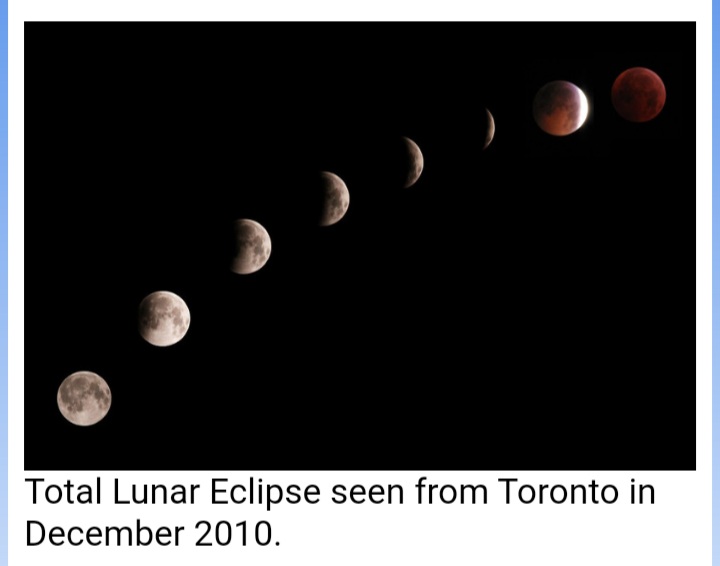**** Info via Environment Canada
Total lunar eclipse
On the night of May 15-16, if the sky is clear, a total lunar eclipse will be visible across the country. The eastern part of Canada will be able to see the entire eclipse, while Western Canada will miss part of the penumbral phase, when the Moon crosses the Earth’s penumbra.
Total Lunar Eclipse seen from Toronto in December 2010.
What is a lunar eclipse?
A lunar eclipse occurs when the Earth moves between the Moon and the Sun. The Moon passes through the shadow cast by the Earth. This phenomenon can only happen when the Moon is directly opposite to the Sun in the sky, a monthly occurrence we know as a “Full Moon”. Unlike solar eclipses, anyone on the night-side of the Earth can see it at the time of the eclipse.
Animation of a lunar eclipse. Credit: NASA.
During a lunar eclipse, Earth’s shadow consists of the umbra (inner part, where there is no sunlight) and the penumbra (outer part, where there is some sunlight). Depending on the Moon’s trajectory, there can be three types of lunar eclipses:
- Penumbral eclipse: when the Moon crosses Earth’s penumbra.
- Partial eclipse: when the Moon partially crosses Earth’s umbra.
- Total eclipse: when the Moon completely crosses Earth’s umbra.
Different stages of a lunar eclipse. Credit: Canadian Space Agency.
Throughout a lunar eclipse, the Moon can take on a reddish colour. This is because the only remaining sunlight reaching the Moon at that point is from around the edges of the Earth, as seen from the Moon’s surface. If we were standing on the Moon during an eclipse, we would see all Earth’s sunrises and sunsets at once!
Will the sky be clear for the eclipse in your area? Check out your Astronomical forecasts.




